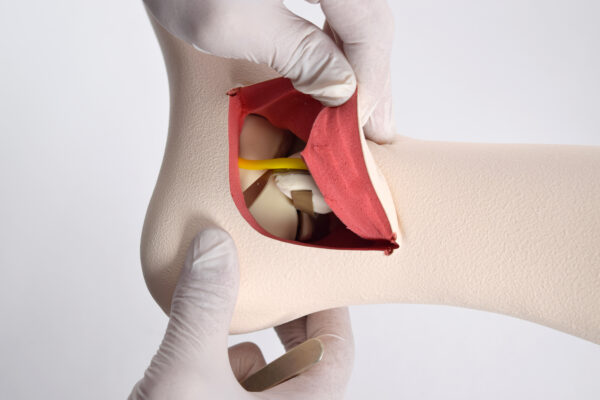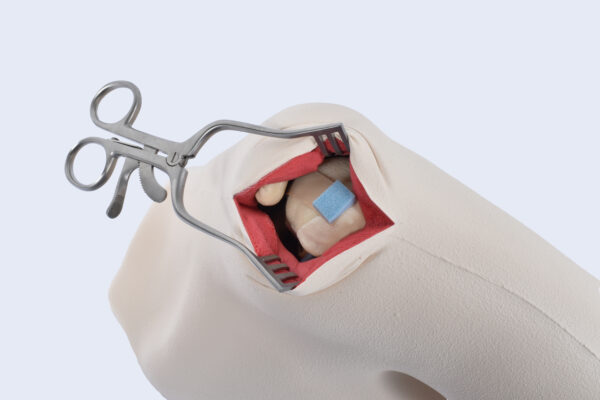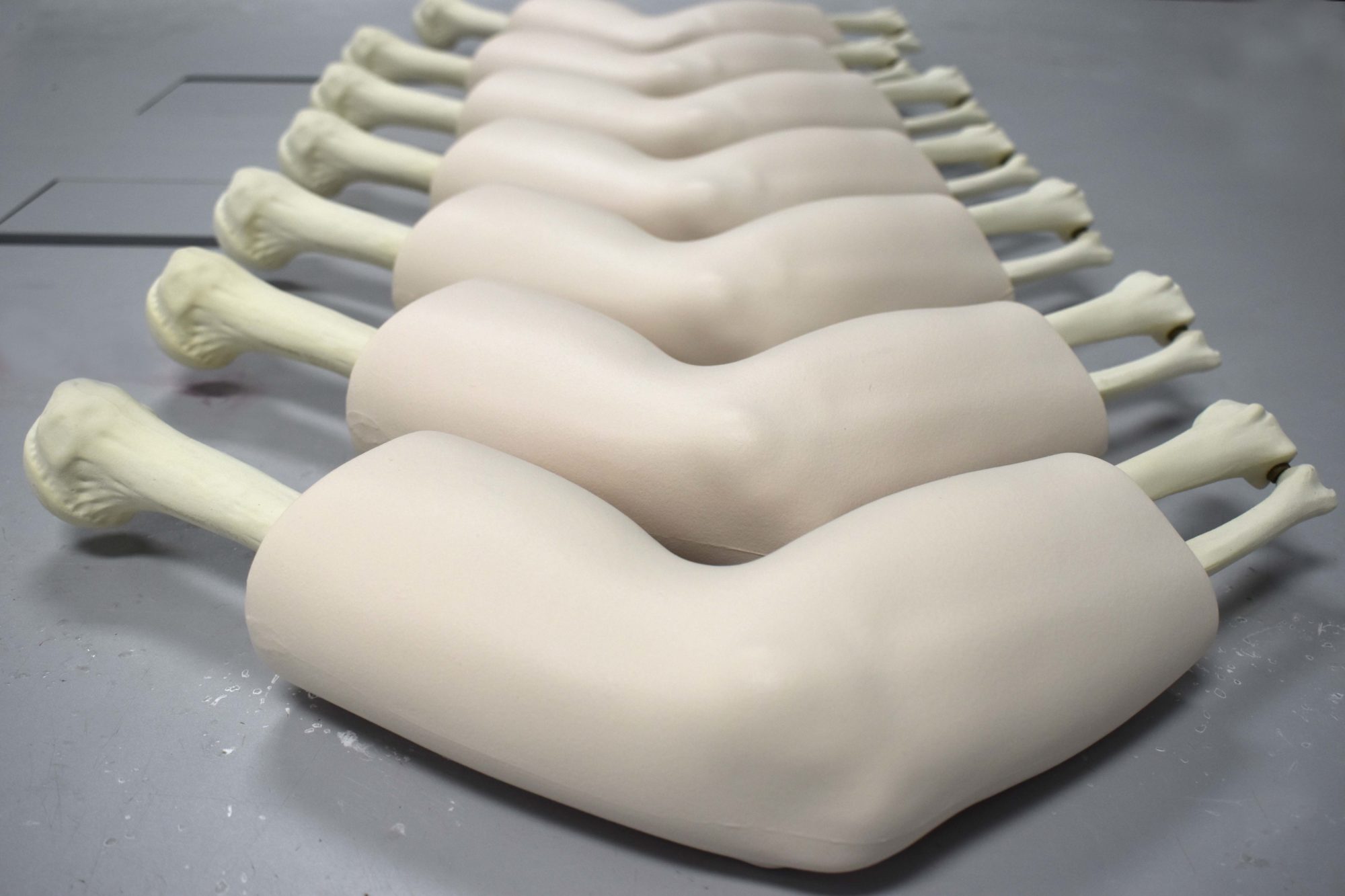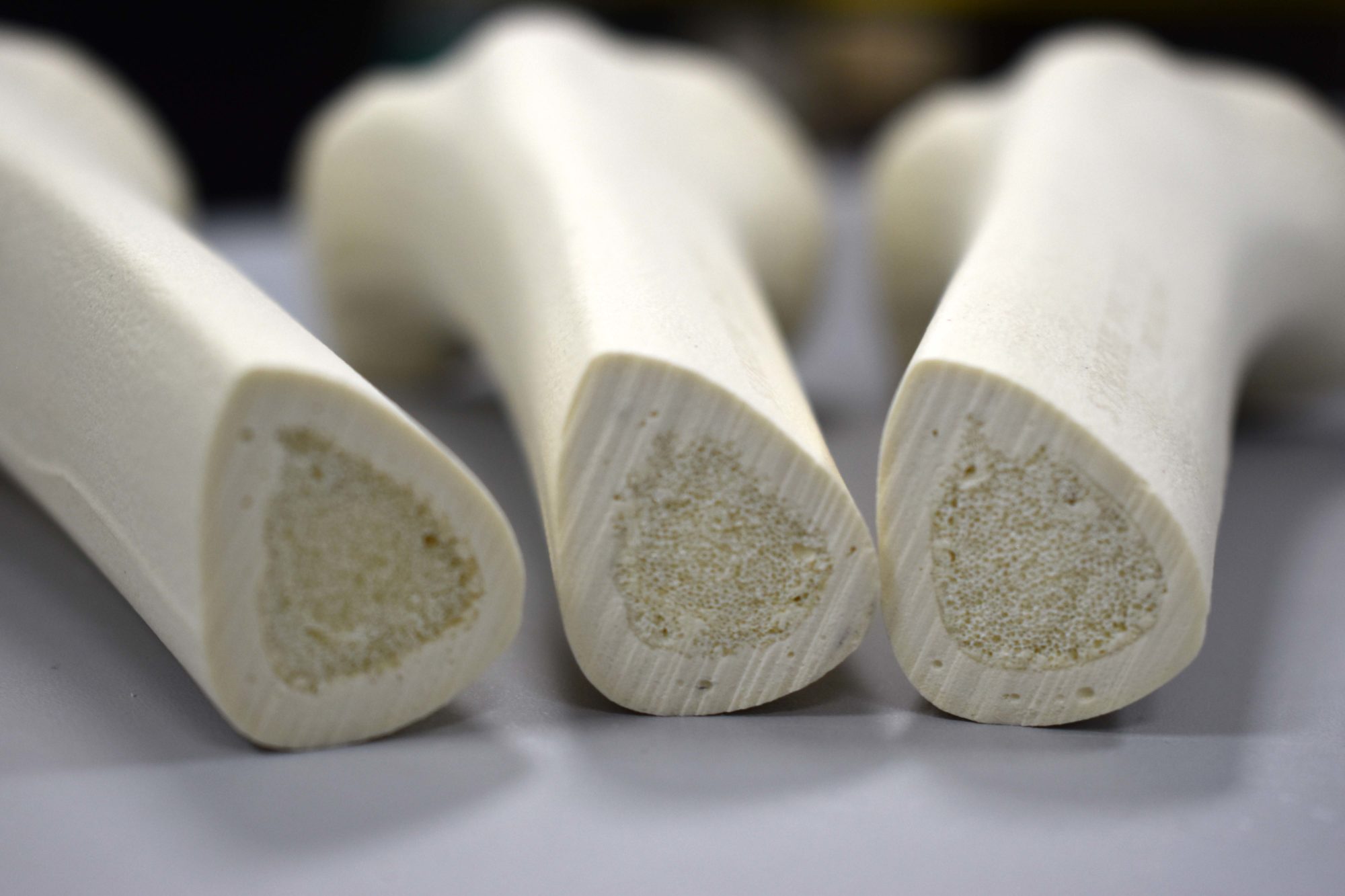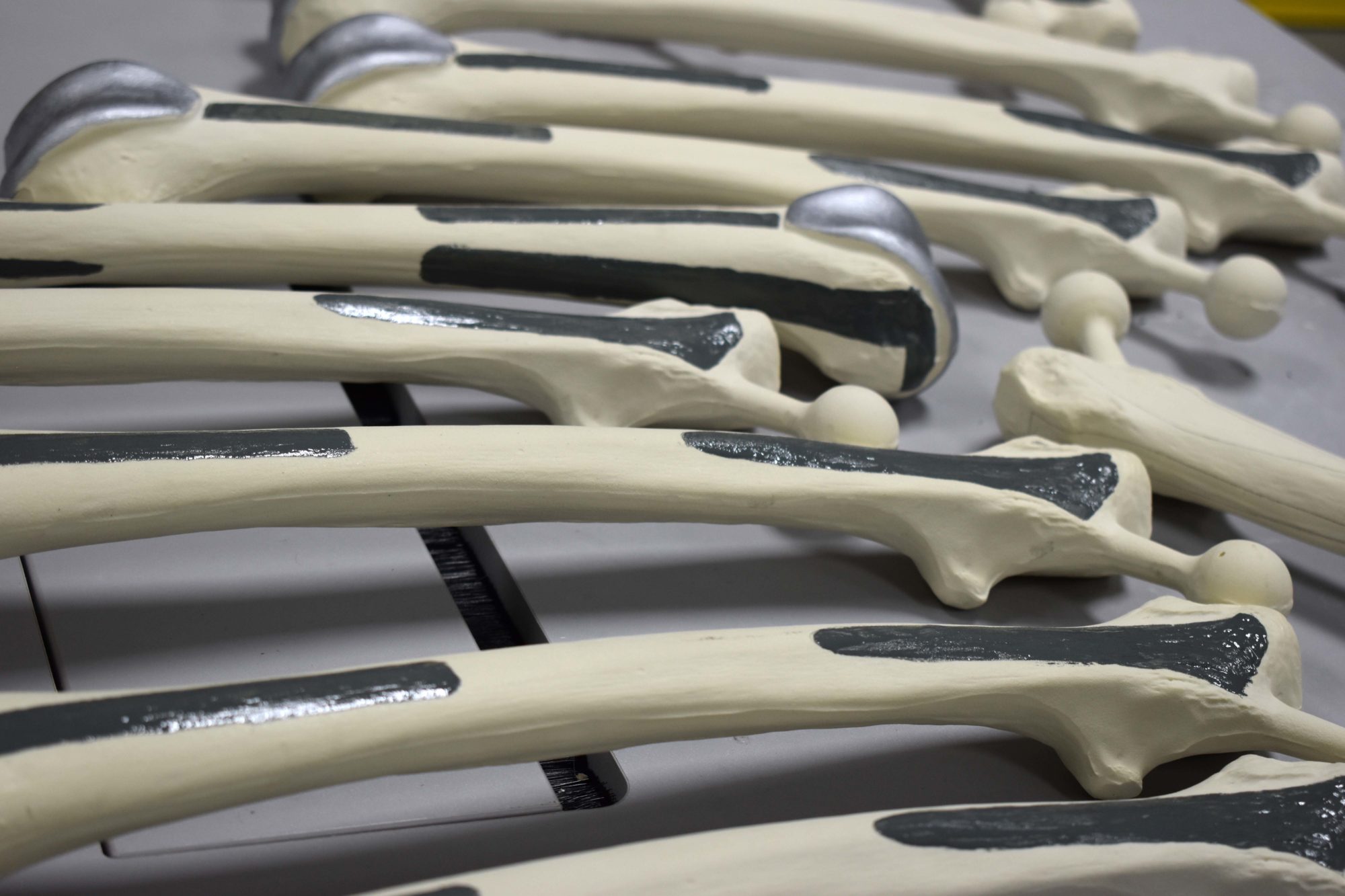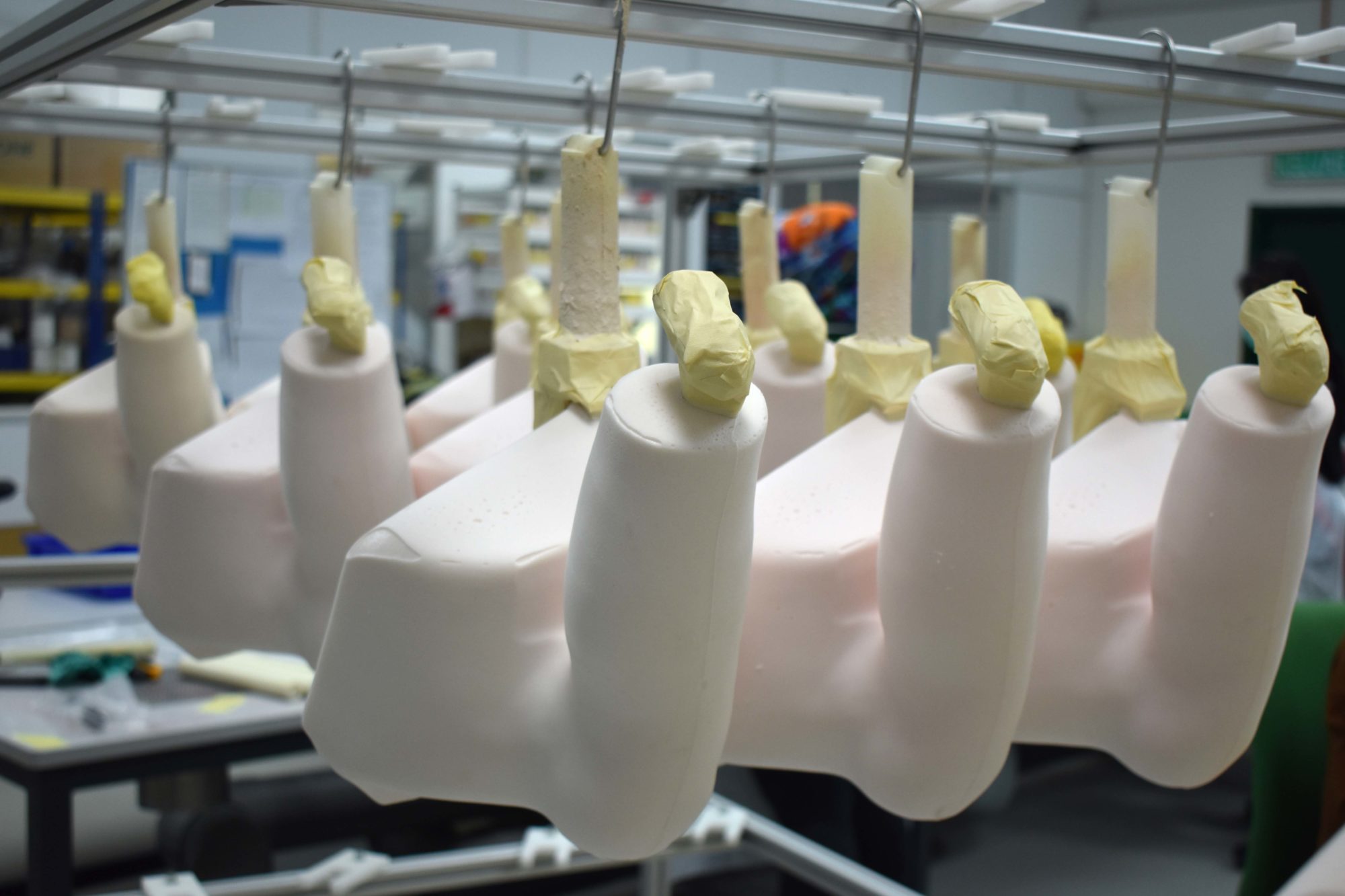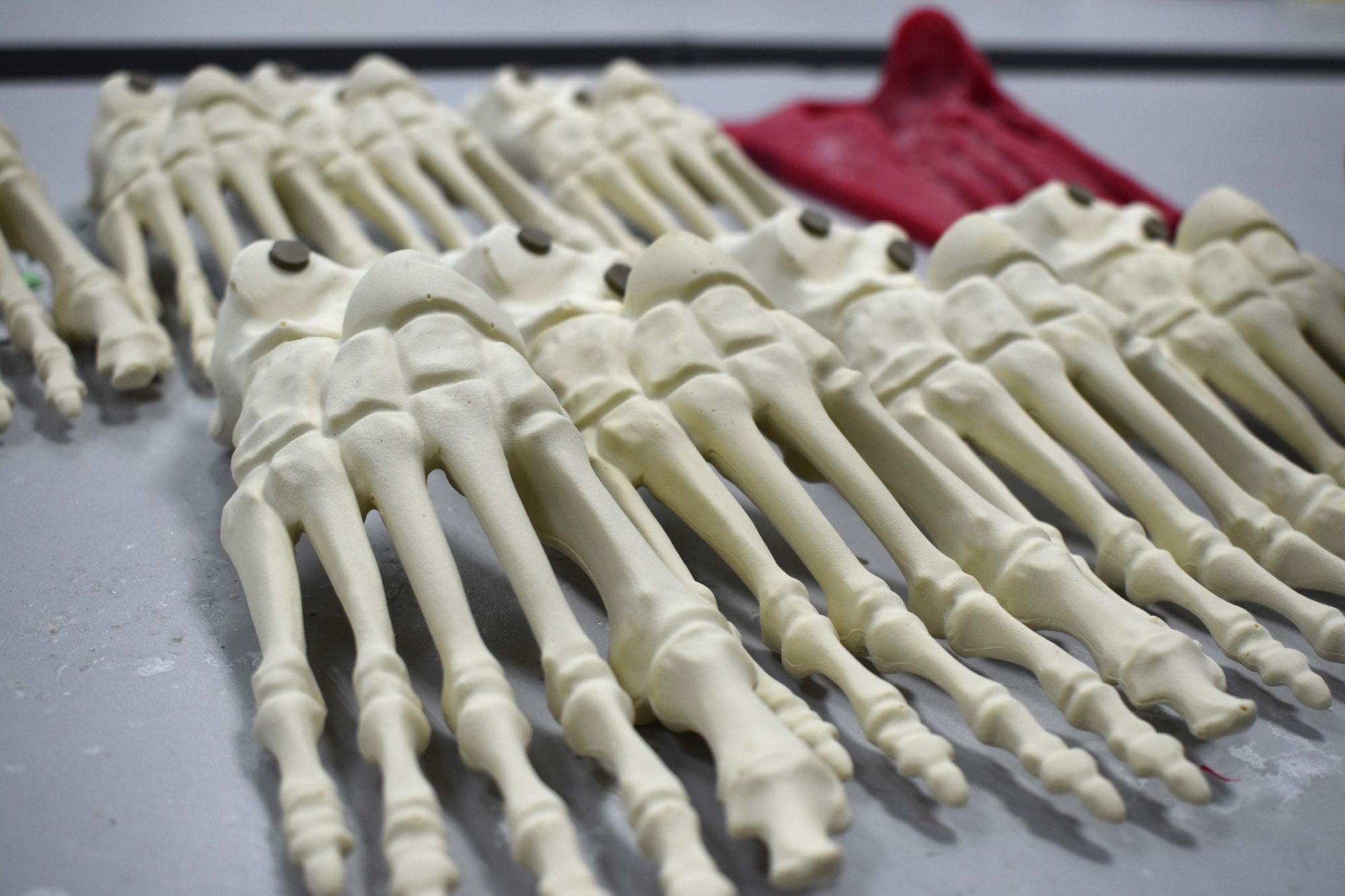Artificial bones versus human bones
SYNBONE’s anatomical models are manufactured with a specially formulated polyurethane foam comprising of a cancellous inner core and a harder outer shell simulating the cortical bone. They are primarily developed for orthopaedic surgical education and are designed to provide the feeling of working with humanlike bone. Similar forces are required to saw, tap, plate and drill our models.
Although the SYNBONE’s do not have the same biomechanical properties of natural bone, which is stronger than the SYNBONES due to its complex composition, the feedback is very positive from a number of biomechanical testing facilities that have compared our bone models with real bones.
During ballistic testings SYNBONE’s fracture in a manner very similar to natural bones providing an excellent reproducible simulation. SYNBONES provide the excellent mechanical properties of natural bone.
BONE MODELS
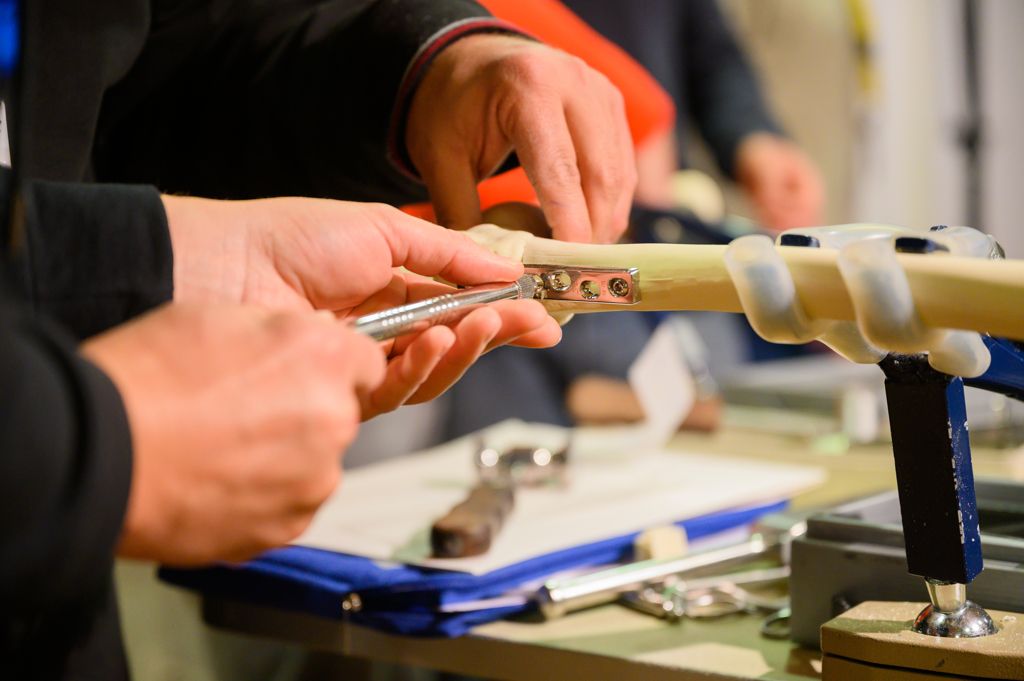
Mechanical Properties
The handling properties of SYNBONE closely simulate those of real bones and are achieved by complex design, moulding and production techniques. They can be cut, drilled, tapped and modified by all available orthopaedic instruments. Even complex fractures and pathological conditions may be mass produced enabling training in large scale surgical skill courses.
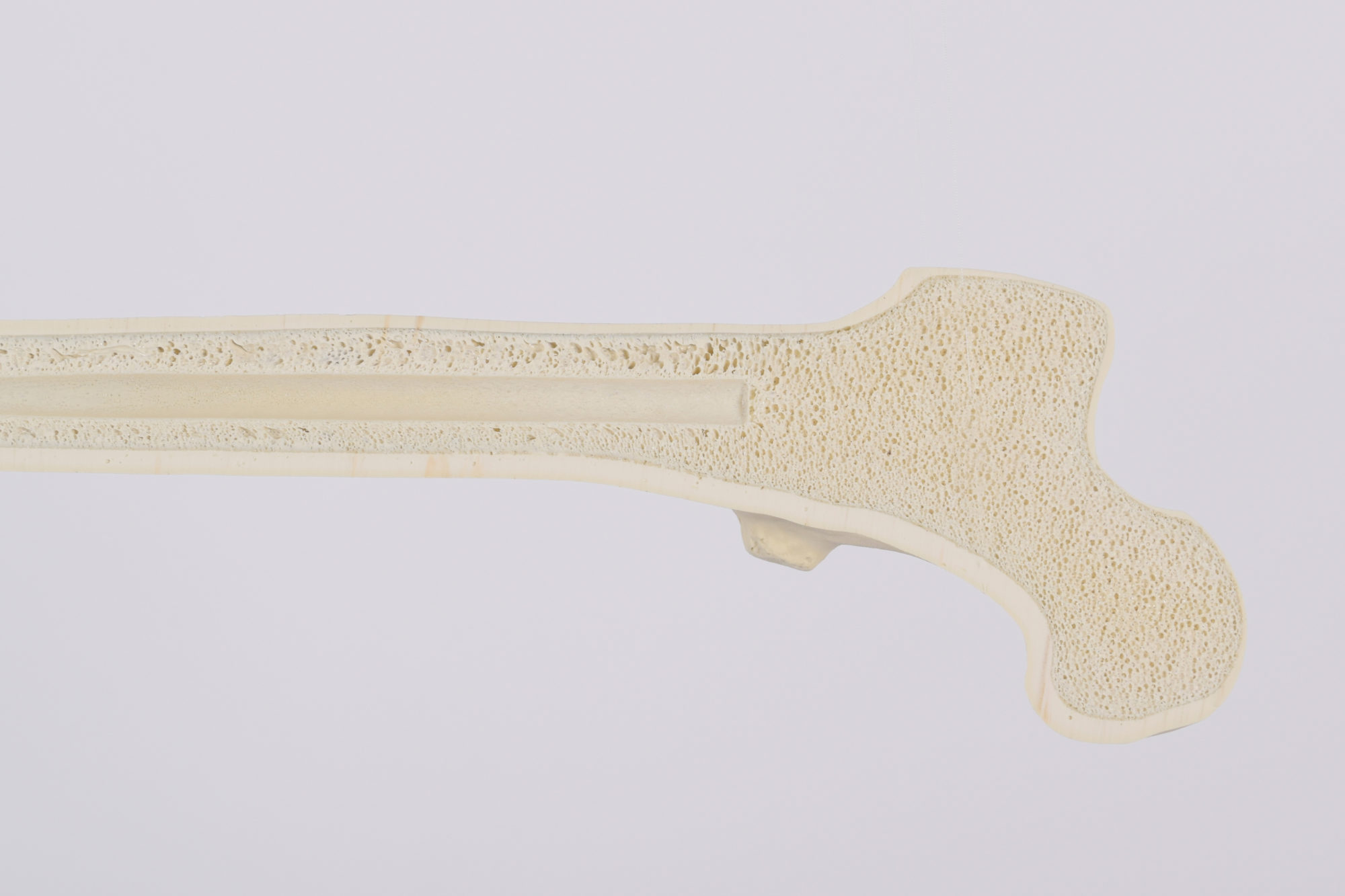
Cortical / Cancellous bone models
A cortical layer and an inner foam structure are representing the cancellous bone in this example with a an intramedullary canal.
Soft cancellous bone is used in models designed for total joint replacements and internal fixation on long bones.
Medium cancellous bone can be used for the same applications as the soft cancellous bone as well as for external fixation and reference mark pinning.
Hard cancellous bone is mainly used for external fixation.
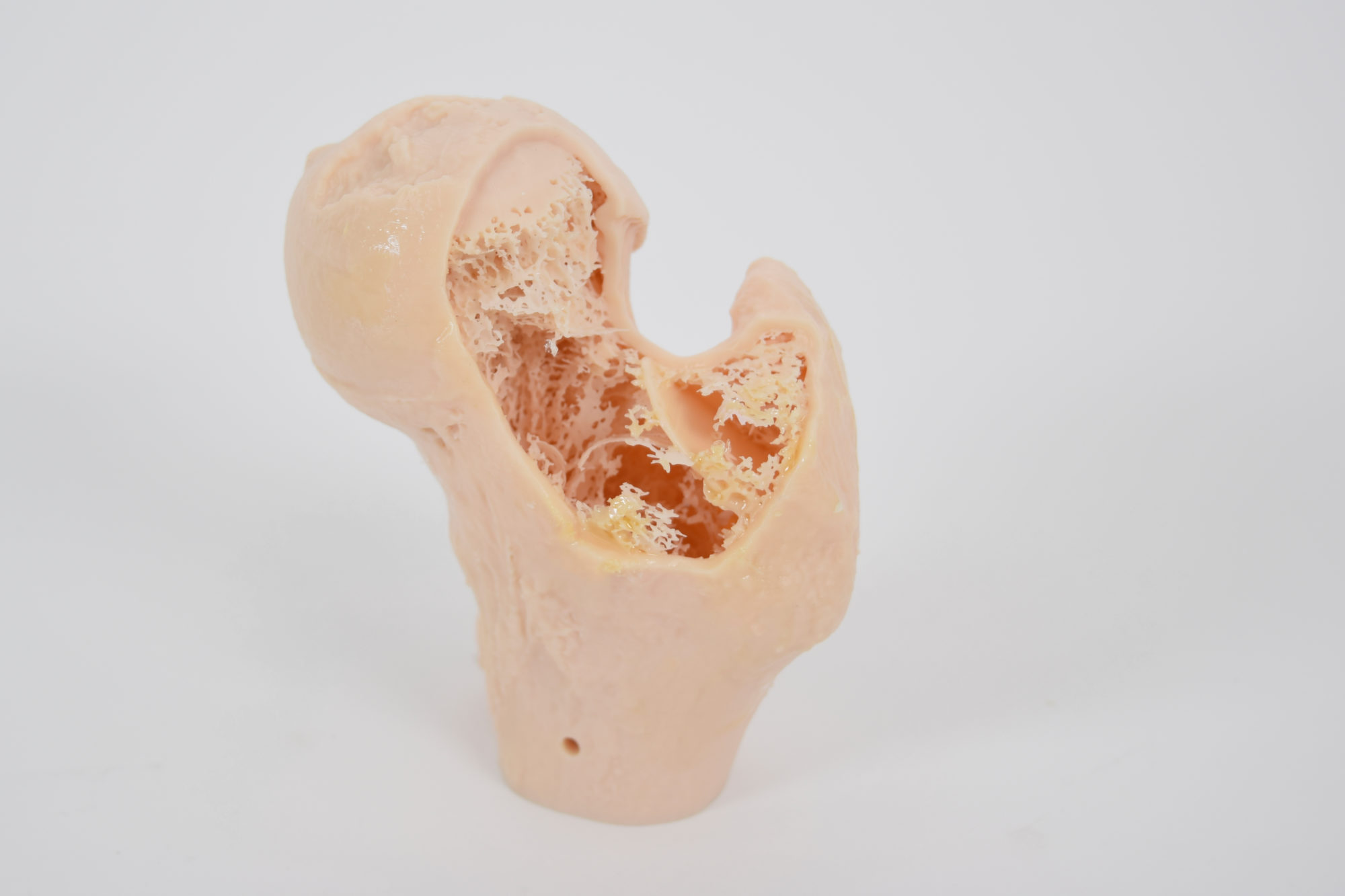
Osteoporotic models / open cell
Bone models with a thin cortical layer and an open cell cancellous section at the proximal and distal ends. The properties of the inlay allow all application techniques of cement injection. All models may be fractured and delivered with defects on request.
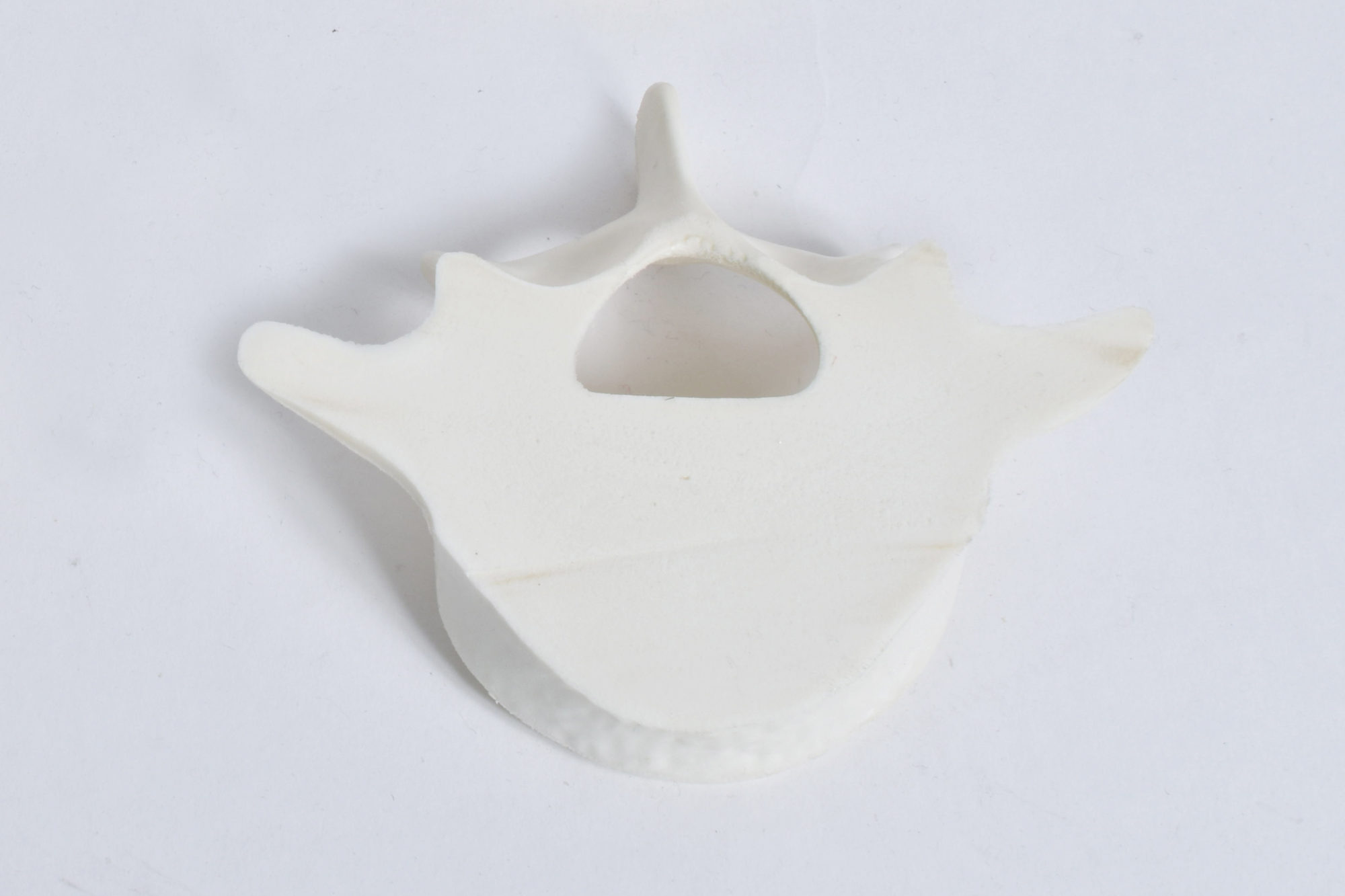
Solid foam models
These models consist of a single solid rigid foam and are most commonly used for external fixation and pinning.
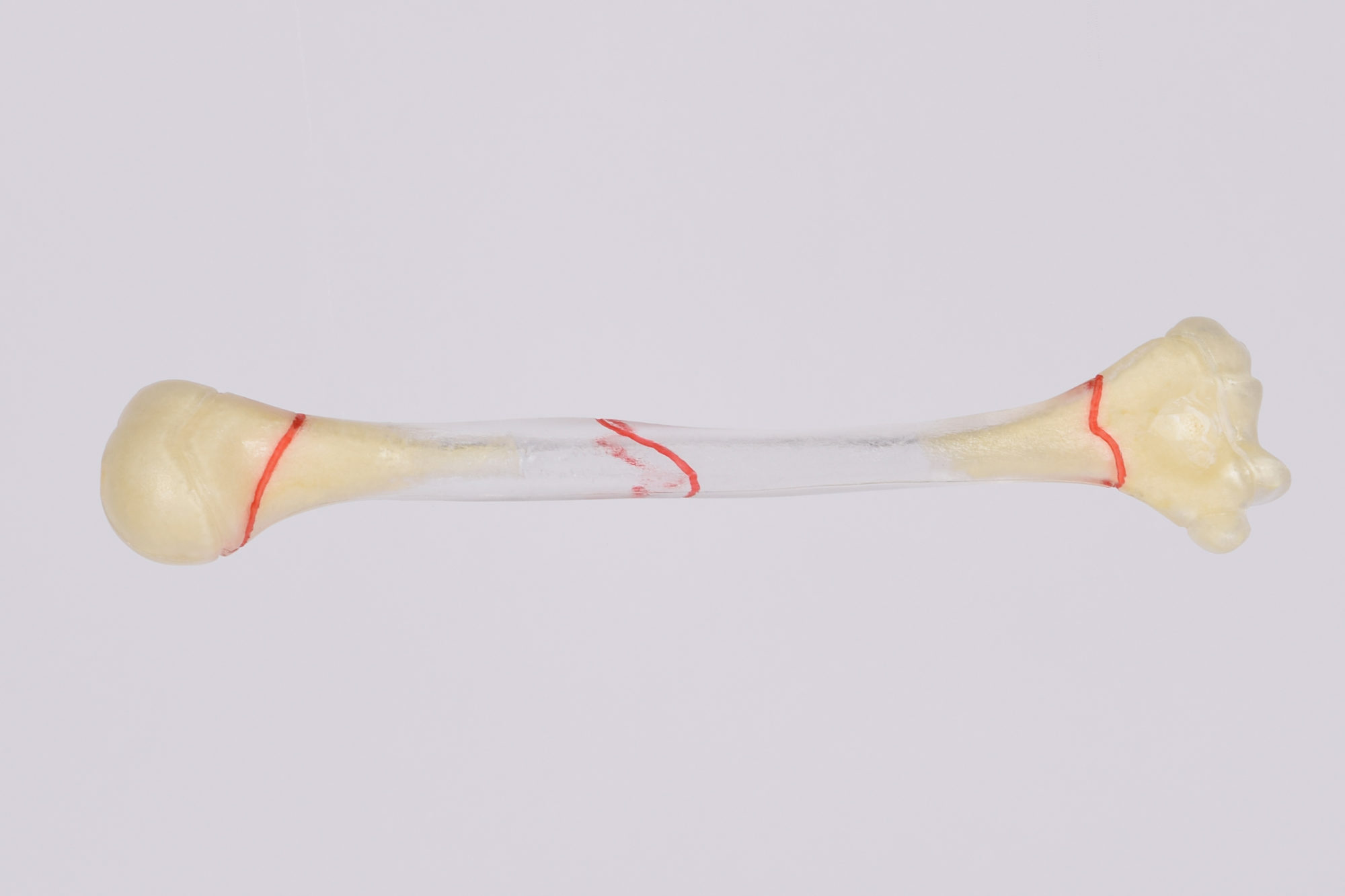
Semi-Transparent Cortical models
A transparent cortical shell is covering cancellous regions at the distal and proximal ends. The mid shaft of pediatric bones a transparent shell forms an intramedullary canal. These models are mostly used in the training of intramedullary fixation where x-ray is normally required.
Soft tissue models with intermuscular fascia
Models with soft tissue present a more realistic situation when simulating surgical procedures and positioning implants for minimally invasive and arthroscopy techniques.
All soft tissue models from SYNBONE contain a simulated intermuscular fascia for an improved tear resistance while working on the model after the incision cut was made.
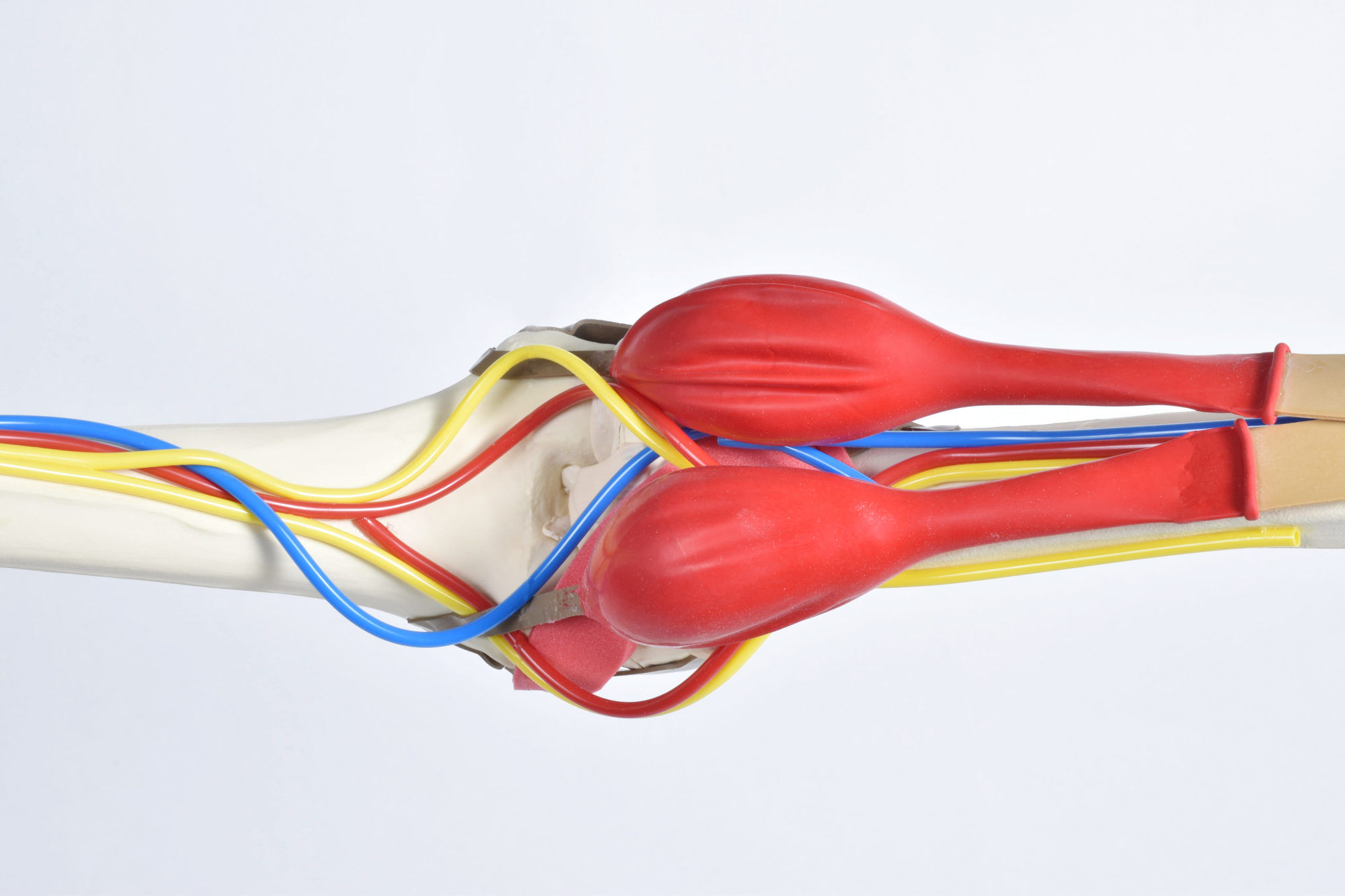
Structured models
In situations where operating techniques require the presence of structures, our bone models are available with skin, muscles, ligaments, tendons, nerves, joints, arteries and veins.
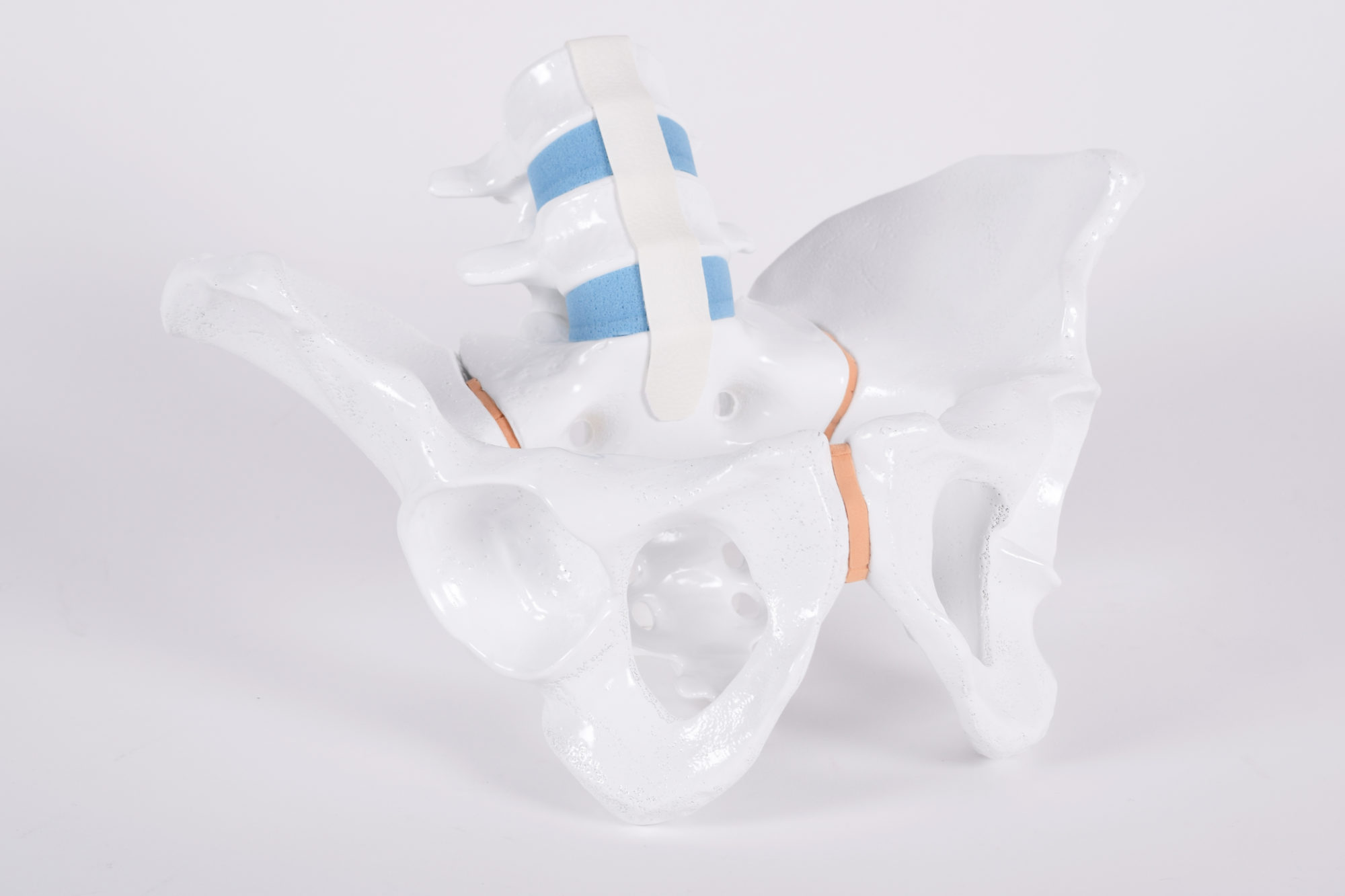
Metallic coated models
Our wide range of products with metallic coating are made of solid foam with a low density. Our radiopaque models are designed for medical imaging.
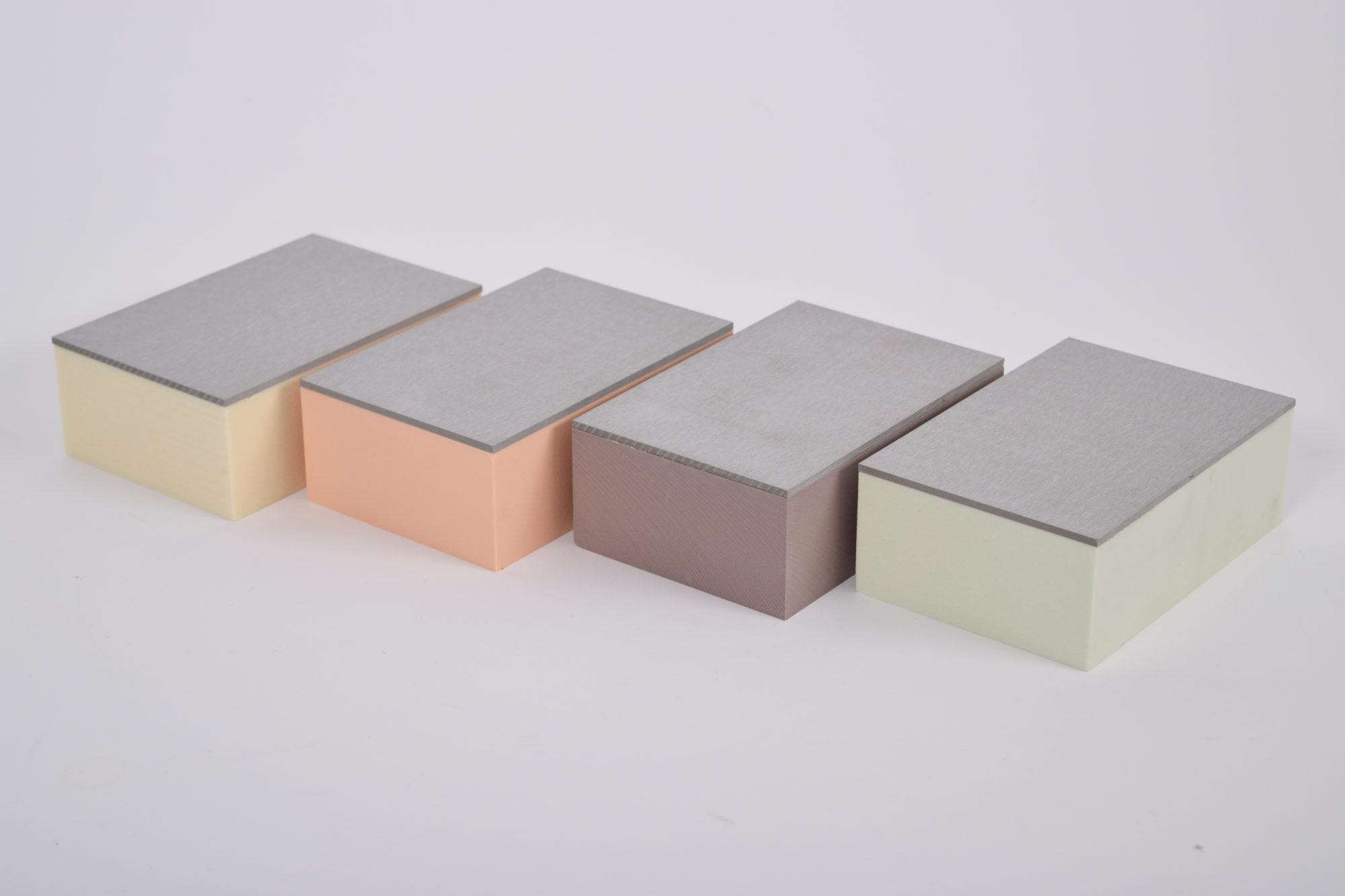
Generic models
These models have highly simplified shapes such as rods, spheres, sheets and blocks. Ideal for basic instruction and ballistic testing.

